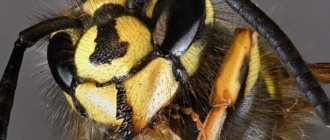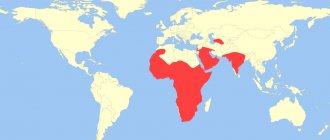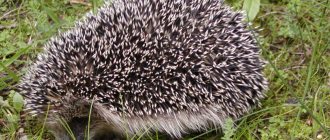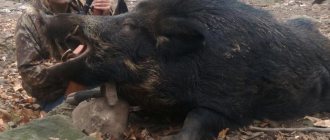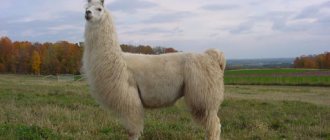- Wild animals
- >>
- Mammals
When the name “corsac” , many will not immediately understand what kind of animal it is. But if you just look at the photo of a corsac dog, you can immediately see that it is very similar to an ordinary fox, only it is a smaller copy of it. We will learn in more detail about its life activity by studying its external characteristics, determining its habitat, analyzing its habits and morals, and considering its reproductive characteristics and preferred diet.
Origin of the species and description
Photo: Korsak
Corsac is also called the steppe fox; this predator belongs to the canine family and the genus of foxes. It is believed that the name of the animal is related to the Turkic word “karsak”, which is associated with someone short, short, or short. The corsac is smaller than the scribe, and looks very similar to the red fox, only in smaller sizes.
Interesting fact: The body length of the steppe fox rarely exceeds half a meter, and its weight varies from three to six kilograms. It is worth noting that zoologists distinguish three subspecies of corsac, which differ slightly not only in their locations, but also in the size and color of their coat.
If we compare the corsac fox with the red fox, then in terms of physique they are very similar, both foxes have an elongated and squat body, only the corsac fox is let down in size. It is inferior to the red cheat not only in size, but also in the length of its tail. In addition, the tail of an ordinary fox looks much richer and fluffier. The difference between the corsac and the red predator is the dark tip of its tail, and it differs from the Afghan fox by the presence of a white chin and lower lip.
Of course, its color, in comparison with the red-haired, cunning beauty, is not so bright and expressive. But this coloring faithfully serves the predator, helping it to remain unnoticed in the open expanses of the steppe, which are often covered with grass dried out from the hot sun. In general, the corsac is commensurate with a fairly well-fed cat or small dog; its height at the withers practically does not exceed the thirty-centimeter limit. If we talk about gender differences, then in corsacs it is practically absent. The male is slightly larger than the female, but this is almost invisible, and they are identical in color.
fennec
It is a desert native extending from Morocco to Tunisia, Egypt to Somalia.
Fennec fox is the tiniest fox with an unusual appearance. This animal is the size of a domestic cat. At the withers, the fennec reaches 18-22 cm, the body length is on average 30 cm, and the animal weighs one and a half kilograms. The muzzle is short and sharp
Fenech attracts a lot of attention with its ears. He is the owner of the largest ears disproportionate to the head among predators
Their length reaches almost half of the animal’s body. However, such an inharmonious build of the fennec is due to its habitat. The ears, as well as the furry feet, characteristic of all steppe foxes, serve them for cooling.
The fennec cat's fur is thick, silky and long. Its upper part is red or fawn, and its lower part is white. The tail is quite pubescent, with a black tip. In the wild habitat it digs a deep hole with numerous tunnels, in the vicinity of bushes and grass thickets. Fenech does not like loneliness; family groups consist of 10 individuals. The members of such a family are usually usually a “married” couple and children from the previous litter who have not reached puberty. The chanterelle's food consists of small vertebrates, eggs, insects, carrion, plant rhizomes and fruits.
When catching food, they show agility, agility, mobility and the ability to jump high and far, up to 70 centimeters in height.
Fennec breeding occurs once a year. Puppies are born after 50-53 days.
The female does not leave the den until they are two weeks old, and does not allow the male to approach them. After 3 months of life, babies can already leave their mother.
The little fennec can also be found at home as a pet. Fans of exotic animals are ready to pay a considerable amount for a pretty fennec. Domestic phoenixes are very inquisitive, affectionate and funny animals.
Appearance and features
Photo: What a corsac looks like
Everything is clear about the corsac's dimensions, but its color contains grayish-ocher and brownish shades; closer to the forehead area the color becomes darker. The face of the steppe fox is short and pointed, the cone widens closer to the cheekbones. The pointed ears of the corsac are quite impressive and wide at the base; on top they have a brown-red or gray-ochre tone. On the inside of the ears there are quite dense yellowish hairs, and their edging is white.
Video: Korsak
The area around the eyes has lighter fur, and the triangle formed by the corners of the eyes and the upper lip has a darker background. Yellowish-white fur is visible on the throat, neck and near the mouth.
Interesting fact: The corsac dog has very small teeth, which are identical in structure and number to all fox teeth; there are 42 of them. The corsac dog’s fangs are still stronger and more powerful than those of the red fox.
With the approach of cold weather, the corsac dog becomes more and more beautiful, its coat becomes silky, soft and thick, painted in grayish-fawn tones. A light brown tone with an admixture of gray appears on the ridge, because guard hairs have silvery tips. If there are a lot of such hairs, then the predator becomes silver-gray on top, but sometimes, on the contrary, there is more brown fur. The shoulder area adjusts to the tone of the back, and lighter shades are noticeable on the sides. The abdomen and chest are white or with flashes of some yellowness. The Corsac's front legs have a yellowish tint in front, and on the sides they are rusty, the hind legs are more faded.
Interesting fact: The summer coat of the Corsac is not at all similar to the winter one; it is rough, sparse and short. Even the tail becomes sparse and plucked. There is no silveriness observed; the entire garment acquires a dirty ocher monochromatic color. Against the backdrop of an unsightly summer suit, the head becomes disproportionately large, and the whole body becomes lean, distinguished by thinness and long legs.
It should be added that in winter the tail of the steppe fox is very rich, noble and magnificent. Its length can be half the body or even more, it ranges from 25 to 35 cm. When the corsac stands, its handsome tail falls straight to the ground, touching it with its darker tip. The tail base is brown, and a grayish-brown or rich ocher color scheme is noticeable along the entire length.
Paraguayan fox
This is one of the representatives of the genus of South American foxes, an inhabitant of the steppes of South America. It has quite large dimensions: height 40 cm, body length 65 cm, weight from 4 to 6.5 kg. The fox's back is reddish to black, with dark stripes down the middle. The top and sides of the head are red, the bottom of the head and white. The animal's ears are triangular in shape and red with white hair inside. The back, shoulders and sides of the street are gray. The hind legs are gray, on the sides with black spots below. The sides of the forelimbs are red. This fox was lucky in the variety of food on the continent. In addition to the main diet: rodents, insects, birds, the Paraguayan fox can feast on snails, scorpions, fish, crabs, possums or armadillos. Pregnancy in the species lasts almost two months. The offspring number from 3 to 6 cubs, which are looked after by both parents. At 2 months they are considered fully grown.
Where does the corsac live?
Photo: Korsak in Russia
Korsak fell in love with Eurasia, capturing Uzbekistan, Kyrgyzstan, Tajikistan, and Kazakhstan. The steppe fox lives in some Russian regions, which includes Western Siberia. On European territory, the area of settlement occupies the Samara region, and in the south it is limited to the North Caucasus, from the north the range extends to Tatarstan. A small distribution area is noted in the southern Transbaikalia.
Outside the borders of our state, the corsac lives:
- in Mongolia, avoiding its mountainous terrain and forests;
- in northern Afghanistan;
- in Azerbaijan;
- in northeastern and northwestern China;
- in Ukraine;
- in northeastern Iran.
There is evidence that the corsac has spread widely between the Ural and Volga rivers. Recently, the steppe fox was noticed in the Voronezh region. Corsac is considered a permanent inhabitant of the western part of Siberia and Transbaikalia.
For places of permanent deployment, the corsac chooses:
- hilly area with low vegetation;
- arid steppe;
- desert and semi-desert areas;
- river valleys;
- sandy places of dry riverbeds.
The steppe fox avoids dense forest thickets, impassable bushes and plowed lands. You can meet a corsac in the forest-steppe and foothills, but this is considered rare; it gets into such areas by accident and for a short time.
Now you know where the corsac fox lives. Let's see what the steppe fox eats.
Spreading
Korsak inhabits the steppes, semi-deserts and deserts of Eurasia. The habitat extends from the eastern and southeastern regions of Ukraine to Mongolia and the northeastern provinces of China.
Steppe foxes also live in Russia, Kazakhstan, Uzbekistan, Turkmenistan, Afghanistan, Iran, Kyrgyzstan, Tajikistan and northern India. They avoid high mountain areas, forests, bushes and human settlements. Occasionally, animals visit farmers' fields in search of food.
Taxonomists distinguish 3 subspecies. The nominative subspecies is distributed in Kazakhstan and Southern Siberia.
What does a corsac dog eat?
Photo: Corsac Fox
Although the corsac dog is not as big as it is, it is still a predator, which is why its varied menu consists of animal food. The steppe fox happily snacks:
- jerboas;
- steppe pieds;
- mice (and voles too);
- gophers;
- marmots;
- various reptiles;
- small birds;
- bird eggs;
- all kinds of insects;
- hare meat;
- hedgehogs (infrequently).
The corsac goes hunting in the twilight, completely alone, although sometimes it can be active during the day. A first-class sense of smell, acute vision and excellent hearing serve him as faithful assistants in hunting. He senses his potential prey from afar, trotting after it against the wind. Having noticed the victim, the corsac quickly overtakes it, but, like its red relative, the fox, it is not able to mouse. When things are really tight for food, the corsac does not disdain carrion, eats various garbage, but does not eat plant food.
Interesting fact: Corsac has an amazing ability; it can survive for a long time without water, which is why it is attracted to life in deserts, semi-deserts and arid steppes.
The steppe fox predator very cleverly catches small feathered game, because... moves quickly and moves with lightning speed, he can even climb a tree without much difficulty. When searching for food, the corsac is able to cover several kilometers at once, but in winter, with extensive snow cover, this is very difficult to do, so many individuals die in the cold season.
Interesting fact: At the end of the harsh winter season, the corsac population is greatly reduced. There is evidence that in some regions it decreases tens or even a hundred times in one winter, which is very sad.
Features of character and lifestyle
Photo: Korsak in Astrakhan
Korsaks cannot be called loners; they live in families. Each family group has its own land holding, which can occupy from two to forty square kilometers; it happens that the area exceeds one hundred square kilometers, but this is rare. These canines can be called burrowing animals; on their territorial territory there are entire branched labyrinths of burrows and many well-trodden, constantly used paths. Corsacs are accustomed to underground shelters, because... in the places where they live, the hot daytime climate abruptly changes to a rather cool one at dusk, and the winters are very harsh and there are often snowstorms.
The corsac itself practically does not engage in digging holes; it lives in empty shelters of marmots, gophers, large gerbils, and sometimes settles in the holes of red foxes and badgers. In bad weather, the predator may not leave its shelter for several days.
Interesting fact: Due to the fact that the steppe fox does not like to dig holes, but lives in strangers, he has to do redevelopment from the inside, the obligatory solution here is the presence of several exits in case he has to suddenly evacuate.
There are several burrows, the depth of which reaches two and a half meters, in the possessions of the corsacs, but they live in only one. Before leaving the shelter, the cautious fox looks outside, then sits for a while near the exit, so he looks around the area, and only after that he goes out on a hunting trip. In some areas, when the autumn cold sets in, corsacs migrate to the south, where the climate is milder.
Interesting fact: Sometimes corsacs have to migrate, this happens due to steppe fires or mass extinction of rodents; in such times, steppe foxes can be found within cities.
Steppe predators communicate with each other using various sounds: squealing, barking, growling, yelping. Scent marks are also a method of communication. Barking, most often, indicates the educational process of young animals. Corsacs have excellent eyesight and hearing, and when running they can reach speeds of up to 60 kilometers per hour. If we talk about the disposition and character of these animals, then they cannot be called aggressive; they are loyal to their close relatives and behave calmly. Of course, conflicts also occur, but it rarely comes to a fight (they happen during the wedding season); animals most often limit themselves to barking and growling.
More facts
Known subspecies:
- Vulpes corsac kalmykorum
- Vulpes corsac turkmenika
And also, the American corsac named at the beginning of the article - Vulpes velox.
When getting out of a hole, the corsac dog is so careful that it listens to what is happening outside for several minutes and only then comes out!
Video
Social structure and reproduction
Photo: Corsac cubs
Corsacs, compared to other foxes, lead a collective life; often several steppe foxes live together in the same territory where their burrow is located. Predators become sexually mature closer to ten months of age. These animals can be called monogamous, they create strong family unions that exist throughout their lives; the disintegration of such a family can only be the death of one of the fox spouses.
Interesting fact: In difficult winter times, corsacs hunt in entire groups, which are created from a family couple and their grown-up offspring, this makes it much easier for them to survive.
The mating season for corsacs begins in January or February, sometimes at the very beginning of March. During the rut, males often bark at dusk, looking for a mate. One lady is usually claimed by several tailed suitors at once, so fights and conflicts occur between them. Corsacs mate underground, in their burrows. The gestation period lasts from 52 to 60 days.
A married couple of corsacs begins to have offspring in March or April. One litter can number from two to sixteen fox cubs, but, on average, there are from three to six. The babies are born blind and covered with light brownish fur. The length of the fox cub's body is about 14 cm, and its weight does not exceed 60 grams. Cubs acquire the ability to see closer to 16 days of age, and when they are a month old, they already feast on meat. Both caring parents take care of the children, although the father lives in a separate hole.
Interesting fact: In the burrows where corsacs live, they are very much overwhelmed by various parasites, so during the period of growth of the fox cubs, the mother changes their location two or three times, each time moving with her offspring to a different burrow.
Closer to five months of age, the young become identical to their adult relatives and begin to move into other burrows. But, with the approach of winter cold, all the young foxes gather together again, which makes it easier to overwinter in one den. The exact lifespan measured by the wild for steppe foxes is unknown, but zoologists believe that it is similar to the lifespan of ordinary foxes and varies from three to six years, but it is precisely established that in captivity a corsac can live a dozen years.
Natural enemies of corsac
Photo: Small corsac dog
The corsac is small, so it has plenty of enemies in wild natural conditions. The most insidious enemies of the steppe fox are wolves and common red foxes. Wolves constantly hunt for corsacs. Although steppe foxes can run fast, they are not able to do this for too long, so the wolf drives them to the point of exhaustion, forcing them to become completely exhausted, and then attacks. There are also some benefits for corsacs in being close to a wolf. Fox predators often eat up the remains of their prey, which are often large goitered gazelles and saigas.
It would be more correct to call the red fox not an enemy, but the main food competitor of corsac foxes, because they eat identical food, and both foxes hunt down small prey. Foxes also compete for the possession of one or another favorite den. In times of famine, an ordinary fox can attack small corsac cubs, tearing open the den where they live, usually the red predator kills the entire brood at once.
Regarding their diet, corsacs also compete with some birds of prey, among which are:
- buzzards;
- harriers;
- saker falcons;
- orlov.
The enemies of the steppe fox can also include people who harm animals directly and indirectly. People kill corsacs because of their beautiful and valuable fur coat; the steppe fox was shot on a large scale in our country in the centuries before and last.
Humans also lead corsacs to death indirectly, through their incessant economic activities, when they interfere with the natural biotopes where this animal is accustomed to living, thereby displacing the steppe fox from its usual habitats. It may be in vain, but corsacs do not have much fear of people and can allow a person to approach them at a distance of about 10 meters. The corsac dog has an interesting defense mechanism: it is able to pretend to be dead, and at an opportune moment, jump up with lightning speed and run away.
Popular message topics
- Hearing
The ears are the organ of hearing that is found not only in humans, but also in any animal. Using the ear, you can hear various sounds or words. They go to the eardrum. Each person can be distinguished approximately - Zebu Cow
Zebu can be confidently called a dwarf cow. Many of its varieties are about 90 cm tall, so they often do not even reach the navel of the average person. The body weight of a zebu is on average 120 kg, - Leaves
The most important external organ of any plant is the leaf. Each leaf plays an important role in the existence of a particular plant. With the help of leaves, the plant undergoes moisture evaporation, gas exchange and photosynthesis. All leaves are similar
Population and species status
Photo: What a corsac looks like
The corsac population has suffered greatly due to uncontrolled hunting in pursuit of valuable fox skins. Only in the century before last, from 40 to 50,000 skins of this animal were exported from the territory of our country. In the twentieth century, between 1923 and 1924, hunters harvested more than 135,000 skins.
Interesting fact: There is evidence that more than one million skins were exported from Mongolia to the USSR between 1932 and 1972.
It should not be surprising that the corsac has now become a rather rare predator, which is under special protection in many regions. In addition to hunting, the reduction in the number of steppe foxes was influenced by the economic activities of people: the construction of cities, plowing of land, widespread grazing of livestock led to the displacement of corsacs from their usual inhabited places. Human actions also influenced the fact that the number of marmots was greatly reduced, and this led to the death of many steppe foxes, because they often occupy their holes for housing, and also feed on marmots.
Now, of course, the skins of steppe foxes are not valued as much as in the old days, and the introduction of special measures and restrictions on hunting has led to the fact that in the west of our country the populations are beginning to recover very slowly, but another reason has appeared - the steppes have begun to overgrow tall grass, which makes life difficult for animals (this happens in Kalmykia).
We should not forget that in some areas a huge number of steppe foxes die due to the fact that they cannot survive harsh winters, when large amounts of snow do not allow the animals to hunt. So, in many places the corsac is considered very rare; its population cannot be called numerous, so the animal needs certain protective measures.

